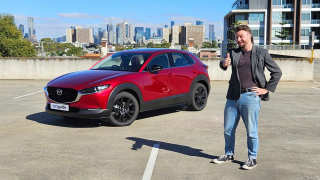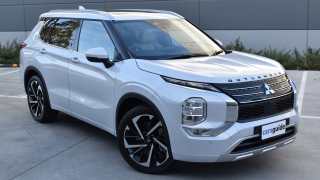
Car transmissions: CVT, DSG, AMT, dual-clutch, DCT or tiptronic?

If your car didn't have a transmission then it wouldn't move, but what is the difference between a manual transmission, an auto transmission, a gearbox, a dual-clutch transmission, a CVT transmission, a DCT transmission, a tiptronic transmission, a PDK transmission, a DSG transmission, an SMG transmission, an E-CVT transmission, or an AMT transmission? In some cases, not much!
There are two basic types of car transmission – manual and automatic. They both make up a key part of the system known as the drivetrain by joining the back of the engine to the differential via a prop shaft. They pass the engine's power to the driving wheels via the diff.
But how does a transmission work? A manual transmission uses a clutch to engage drive to the gearbox or transmission, like a switch. The manual is made up of spinning gears, which the driver can select (known as shifting gears) to keep the car accelerating, and these were the primary type of transmission used in cars from the automobile's inception until the 1990s.
An automatic, or auto, basically uses fluid to shift its own gears based on engine RPM and how much throttle you're using. These started to become common in the 1950s, but really overtook manuals around 15 years ago.
AMT transmissions, refers to an Automatic Manual Transmission and is the semi-official name for tiptronic-type transmissions. These are basically an automatic you can shift manually, either via the gear-shifter or by steering wheel paddles.
In the last 20 years car makers started using automatic transmissions which used dual clutches inside them for much faster, smoother gear shits. These are commonly known as dual-clutch transmissions, and you may have heard of them referred to as DCT (BMW), DSG (Volkswagen, Audi), or PDK (Porsche).
Dual-clutch transmissions have caused a lot of controversy as they have replaced manual transmissions in driver-oriented performance cars thanks to their lightning-fast changes. This angered traditional car enthusiasts who see them as removing a vital part of the driving experience, and they had significant reliability problems in their early iterations.
All transmissions need to be looked after and a transmission service will have to be done on any type of transmission. With manuals, this is normally changing the fluid and sometimes removing the transmission to change the clutch. Automatics can have more transmission problems, particularly if they are overheated or run low on oil.
Transmission repair costs depend on the car they're fitted to but modern dual-clutch automatics are normally the most expensive type of transmission to repair, with dual-clutch transmission rebuild costs running up to $15,000.
Proper sequential transmissions are really only used in race cars as they are not able to handle the rigours of regular driving over hundreds of thousands of miles. BMW released a transmission called SMG which was a clutchless manual sequential, though it struggled with reliability and feel, and was replaced with the dual-clutch DCT later.
There really is no best transmission or worst transmissions in general, as it depends on the car they're fitted to. However, the Porsche PDK is the best dual-clutch transmission I've driven and the BMW E46 M3 CS is the best manual I've driven.










Comments